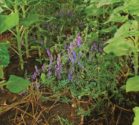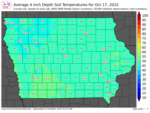Advertise Follow Us
Items Tagged with 'nitrogen'
ARTICLES
In part 2 of this interview with Gibbs, brought to you by SOURCE®️ by Sound Agriculture, he talks about the logistics of making and spraying his compost extract, plus how he uses sap analysis and soil testing to make nutrient management decisions.
Read More
[Podcast] Rebuilding No-Till Soil’s Microbiome with Compost Extract, Part 1
In today’s episode of the podcast, brought to you by SOURCE®️ by Sound Agriculture, Gibbs introduces his method of making vermicompost extract, its benefits and how he applies the product at field scale.
Read More
[Podcast] Kyle Schomers and 300-plus Bushels per Acre
For this episode of the No-Till Farmer podcast, brought to you by Yetter Farm Equipment, we're joined by Kyle Schomers. Schomers picked his best 10 acres and hit it with maximum nutrients in order to prep the ground for entry into the National Corn Growers Assn. (NCGA) Annual Yield Contest.
Read More










